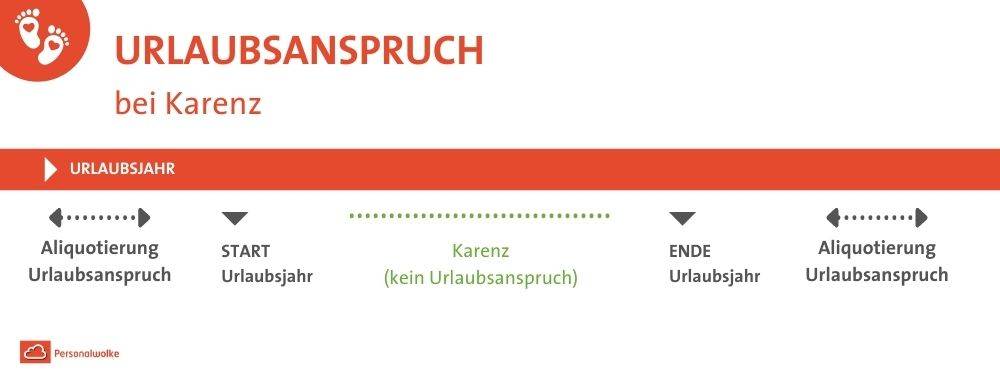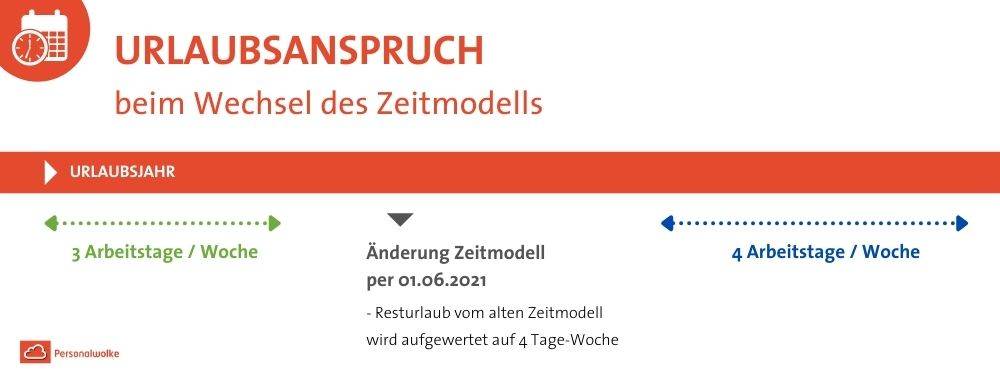Vacation calculation: Personnel cloud knows the differences

New contributions:
Experience the future of corporate management: let your employees manage their own data with Employee Self Service!
Why is trust-based working time so controversial? In this blog, we will tell you what trust-based working hours really mean, what opportunities and risks they entail and which legal regulations employees and employers must observe.
Trust-based working hours: flexibility or control and transparency through time recording?
Why is trust-based working time so controversial? In this blog, we will tell you what trust-based working hours really mean, what opportunities and risks they entail and which legal regulations employees and employers must observe.
The calculation of vacation is a major issue in every company. Why?
Because the legally correct vacation entitlement must be calculated for each employee. Furthermore, there may be various special cases, such as
- Admission,
- maternity leave,
- Change in working days per week due to part-time work,
- Exit
This in turn leads to high workloads due to a manual recalculation of the remaining vacation a time-consuming, error-prone and laborious process!
The Personnel cloud vacation management has already supported some of these scenarios automatically. However, in the special cases mentioned above, there were also scenarios in which a Personnel Cloud administrator had to make the corresponding changes manually. We have been working intensively on this over the last few weeks and have programmed the corresponding parameters and automatic calculations in Personnel Cloud.
The process described in the following paragraphs and New calculation method capitalized as of 01.01.2022 covers the requirements of our Austrian customers and is based on the fact that vacation is managed in days.
For our customers from Germany or Switzerland, there is also a suitable personnel cloud for vacation management. We will describe this in a separate blog post.
Basic information on leave calculation in the personnel cloud
Vacation year / reference date for vacation calculation
The vacation year can be defined in the personnel cloud in two ways:
- Leave year per calendar year = if the key date for leave calculation is 01.01.
- Vacation year per entry date = if the reference date is the entry date
This setting can be defined via the parameter "Key date for leave allocation".
Basic entitlement and increased entitlement after 25 years of service (see also Vacation Act)
Each employee is entitled to one paid vacation per working year in accordance with the following regulations:
- 30 working days* for a period of service of less than 25 years and
- 36 working days* after completion of the 25th year of service
*Working days = 6 weekdays from Monday to Saturday inclusive.
If an employee works fewer than 6 working days, the vacation entitlement must be adjusted accordingly.
Example:
- 5 days/week: 25 working days
- 4 days/week: 20 working days
- 3 days/week: 15 working days
- 2 days/week: 10 working days
- 1 day/week: 5 working days
Depending on the legal requirements, Personnel Cloud leave management supports up to seven additional leave scales.
Example:
- Basic entitlement: 25 days
- Entitlement 1 (after 25 years): 30 days
Special leave days (see also usp.gv.at)
Additional leave in the area of annual leave due to disabilities (as may be defined in collective agreements, works agreements or employment law) can be stored in the personnel cloud.
Remaining vacation accounts
In order to ensure that annual leave is taken in accordance with the law, the remaining leave is divided into three accounts:
- Remaining vacation for current year
- Remaining vacation previous year
- Remaining vacation from previous year
This division is necessary because the vacation entitlement expires two years after the end of the vacation year in which it arose. This means that you have three years to use up your vacation. If you now take your well-deserved vacation, the vacation consumption always reduces the oldest vacation entitlement.
Example:
- Remaining vacation for current year: 25 days
- Remaining vacation previous year: 25 days
- Remaining leave from previous year: 1 day
Employee consumes 15 vacation days:
- Remaining vacation for current year: 25 days
- Remaining vacation previous year: 11 days
- Remaining vacation from previous year: 0 day
The 4 most common special cases and the calculation in the personnel cloud
1. vacation entitlement on joining
Each employee is entitled to paid vacation in the amount of 25 working days with a Five-day week (or 30 working days in the case of a six-day week). The vacation year generally corresponds to the working year and therefore begins on the employee's start date. Under certain circumstances, however, the vacation year or the vacation period can be changed to the calendar year by collective agreement or works agreement or, in companies without a works council, by individual written agreement.
In principle, a distinction must be made as to whether entry in the first half year (01.01. - 30.06.) or in the second half-year (01.07. - 31.12.) took place.
Personnel cloud use case
Admission in the first six months (01.01. - 30.06.)
The entire vacation entitlement is distributed pro rata over the first six months using the following formula.
(vacation entitlement / number of days per year) * days from date of entry = current vacation entitlement rounded up to whole days
In the sixth month, the remaining vacation entitlement is credited to the remaining vacation account.
Admission in the second half of the year (01.07. - 31.12.)
In this case, the entitlement is first pro-rated. Then the vacation is divided up and credited in the first six months of the current and new vacation year:
1 First, the vacation entitlement is calculated on a pro rata basis:
(vacation entitlement / number of days in the year) * (31.12. - entry date) = aliquot vacation entitlement rounded up to whole days
2. allocation of vacation entitlement in the first six months up to 31.12.
The vacation entitlement is credited to the remaining vacation account according to the following formula:
(vacation entitlement / number of days per year) * days from date of entry = current vacation entitlement rounded up to whole days
In the sixth month, the remaining vacation entitlement is credited to the remaining vacation account.
3. at the beginning of the new vacation year, the vacation entitlement is credited until the end of the six months:
(full vacation entitlement / number of days in the year) * days from 01.01. = current vacation entitlement rounded up to whole days

2. vacation entitlement on leaving the company
Vacation accrual is also important when employees leave the company - regardless of whether the employee has resigned or been dismissed. In both cases, outstanding vacation days must be compensated.
If vacation days are still outstanding at the time of termination of the employment relationship, (financial) vacation compensation is due. If the employee resigns without justification (= termination without notice), this is not applicable. The vacation entitlement is therefore calculated in days for the current vacation year.
Personnel cloud use case
If a leaving date is entered in the personnel cloud, the system reduces the leave entitlement in the leaving year at the beginning of the leave year according to the following formula:
(Full vacation entitlement / days in the year) * (days in the year - leaving date) = new vacation entitlement

3. vacation entitlement during parental leave
In the time of a Parental leave no leave entitlement arises under the Maternity Protection Act or the Paternity Leave Act, but during the protection period. This normally begins eight weeks before the expected date of birth and ends eight weeks after (except in the case of premature births, caesarean sections and multiple births).
If an employee goes on maternity leave during a working year, the leave (if it has not already been used up) must be allocated on a pro rata basis at the start of the maternity leave. This task can be very time-consuming for the HR department, but in the Personnel Cloud it is done automatically - with just one formula.
Personnel cloud use case
The personnel cloud automatically reduces the leave entitlement if certain incorrect reasons are entered in the system according to the following formula:(Full vacation entitlement / days in the year) * (days in the year - calendar days with absences*) = new vacation entitlement
*Missing times = there can, of course, be various reasons for errors that lead to an interruption in the counting of leave entitlement and the need to re-evaluate it. The standard missing reasons are stored in the personnel cloud itself. We will be happy to create and activate other or individual incorrect reasons for you.
The leave entitlement is entered in the system retroactively from the start of the leave year.
The following settings must be parameterized:
- The entry of the absence time must not be carried out with the subsequent reason for absence, but with a "from to date"
- The relevant reasons for errors must be stored in the system by a Personalwolke consultant.
- The reason for the error must be displayed on Saturday, Sunday, public holiday

4. vacation entitlement when changing time models (working days/hours per week)
Particularly in the case of part-time employees, there may be changes to the number of hours or working days per week. Changes to the weekly schedule will naturally also result in a different vacation entitlement.
For this case, we have found a calculation solution that correctly covers the legal conditions and automatically displays them in the personnel cloud.
Personnel cloud use case
If an employee changes the time model and the number of working days changes as a result, the following accounts are converted using the old working days and the new working days:
- Current entitlement / current number of working days * new number of working days = new entitlement
- Remaining vacation for current year / current number of working days * new number of working days = new remaining vacation for current year
- Remaining leave previous year / current number of working days * new number of working days = new remaining leave previous year
- Remaining leave from previous year / current number of working days * new number of working days = new remaining leave from previous year

Would you like to know more about vacation calculation?
Arrange a consultation now and we will get back to you shortly.